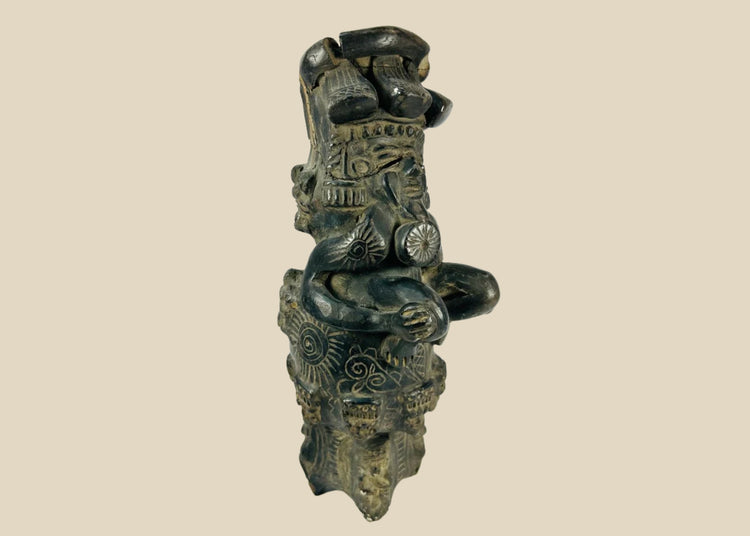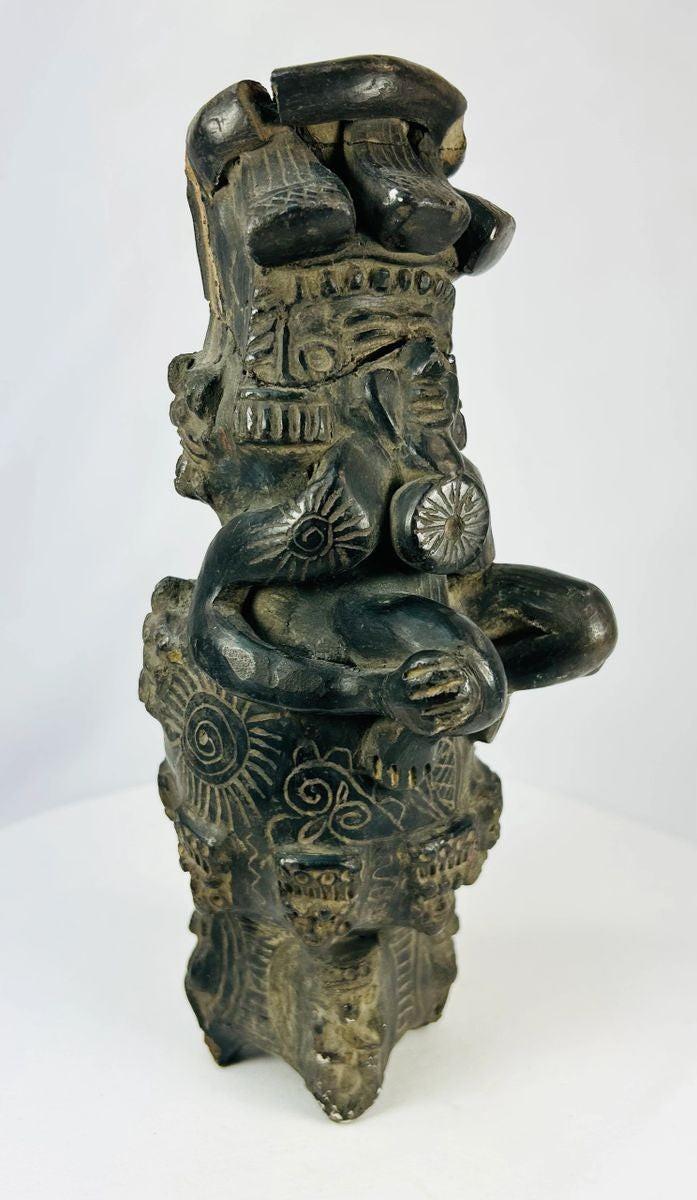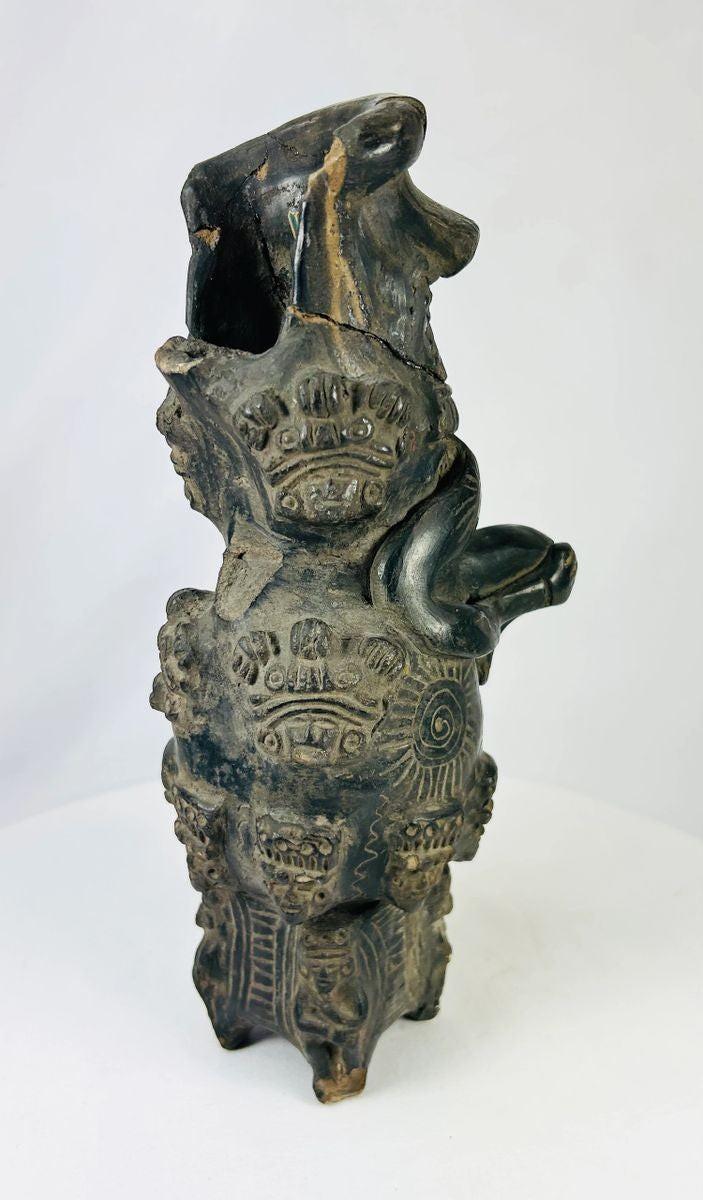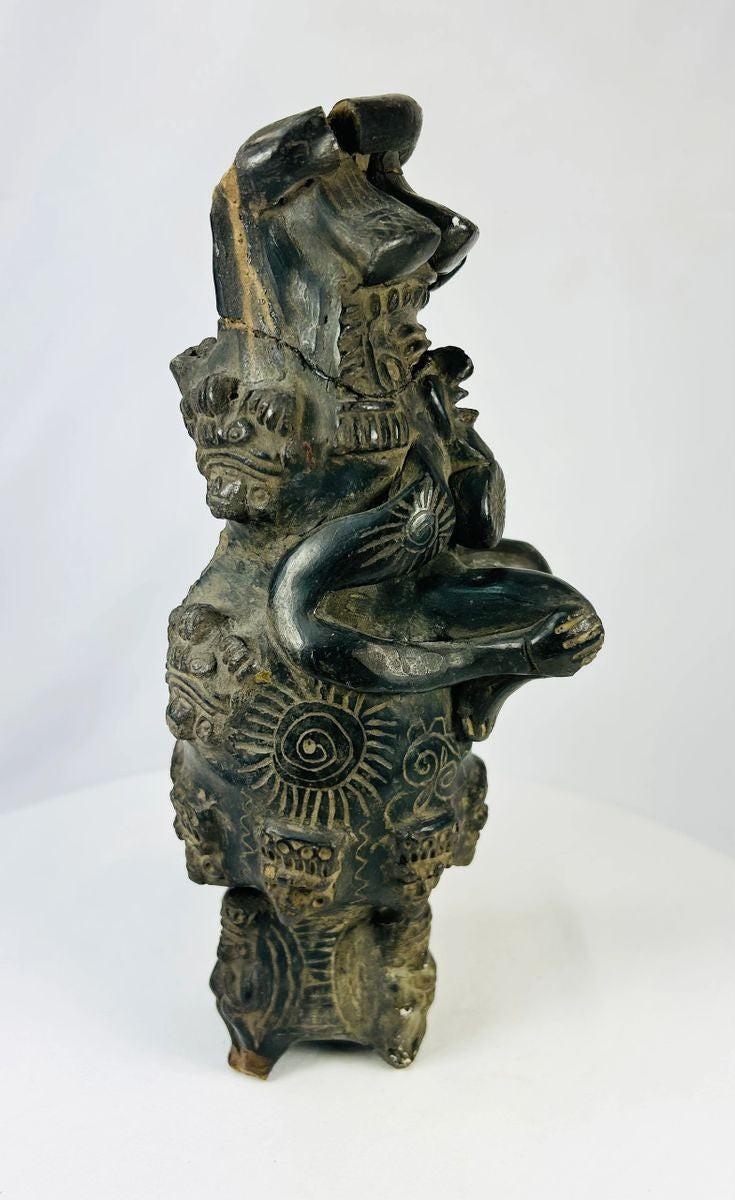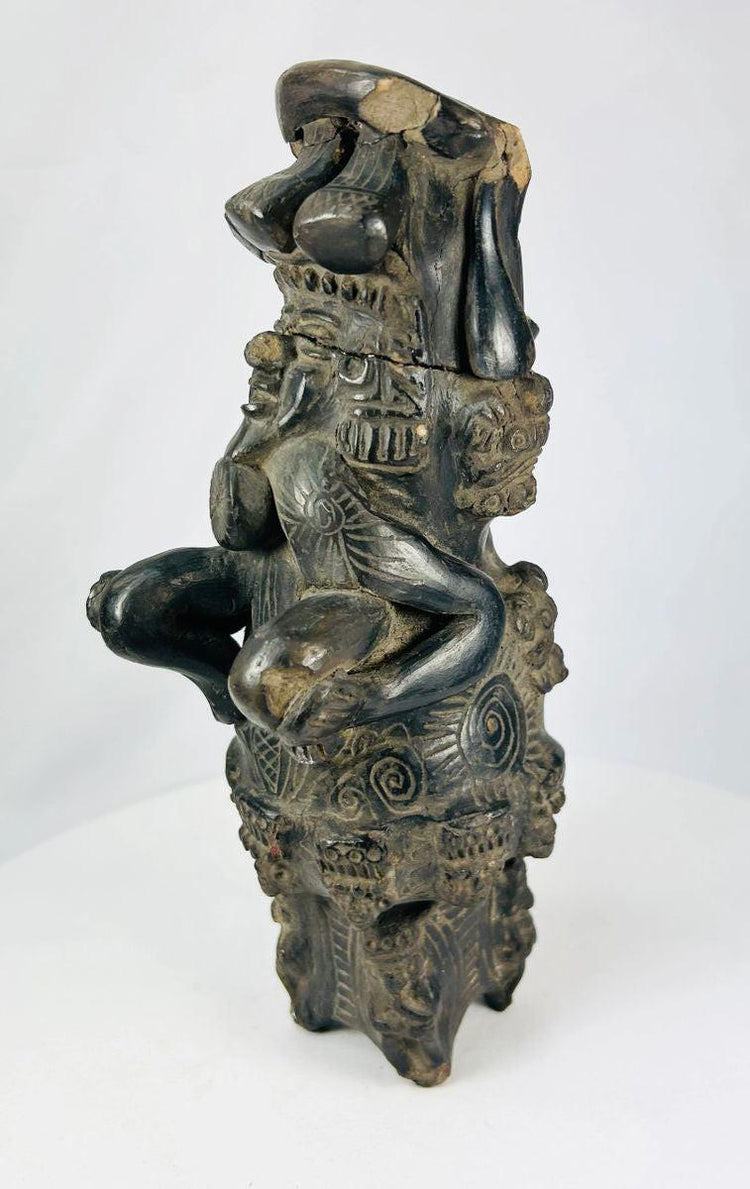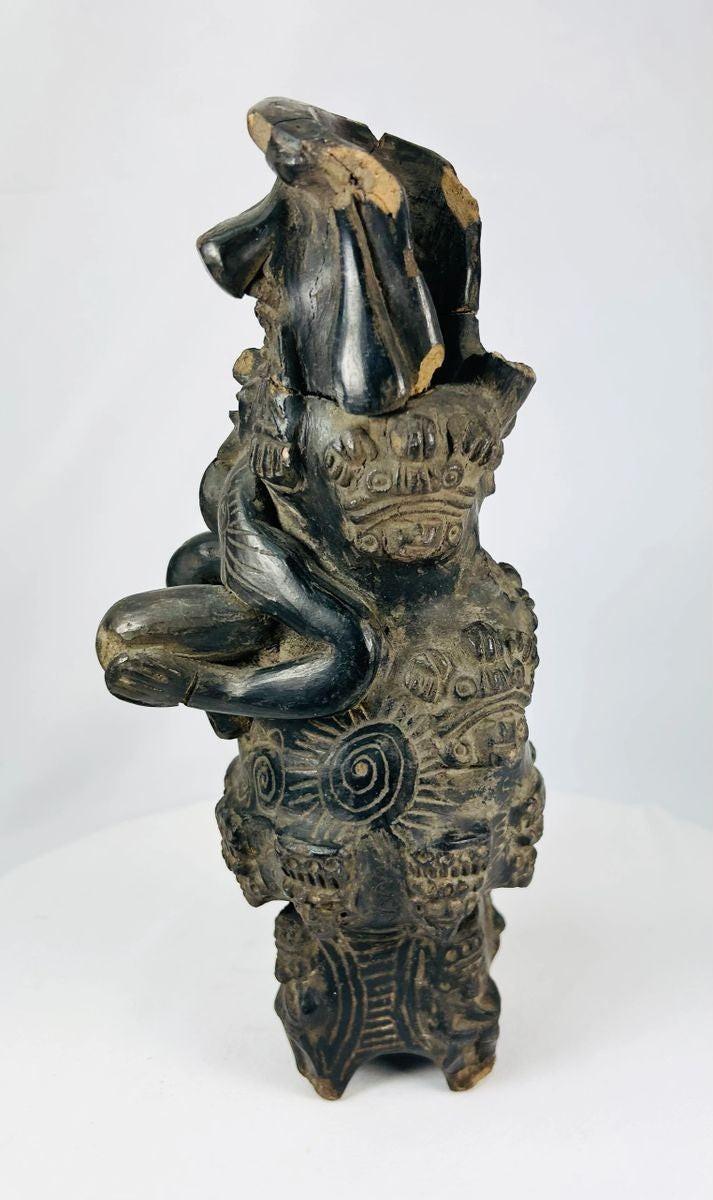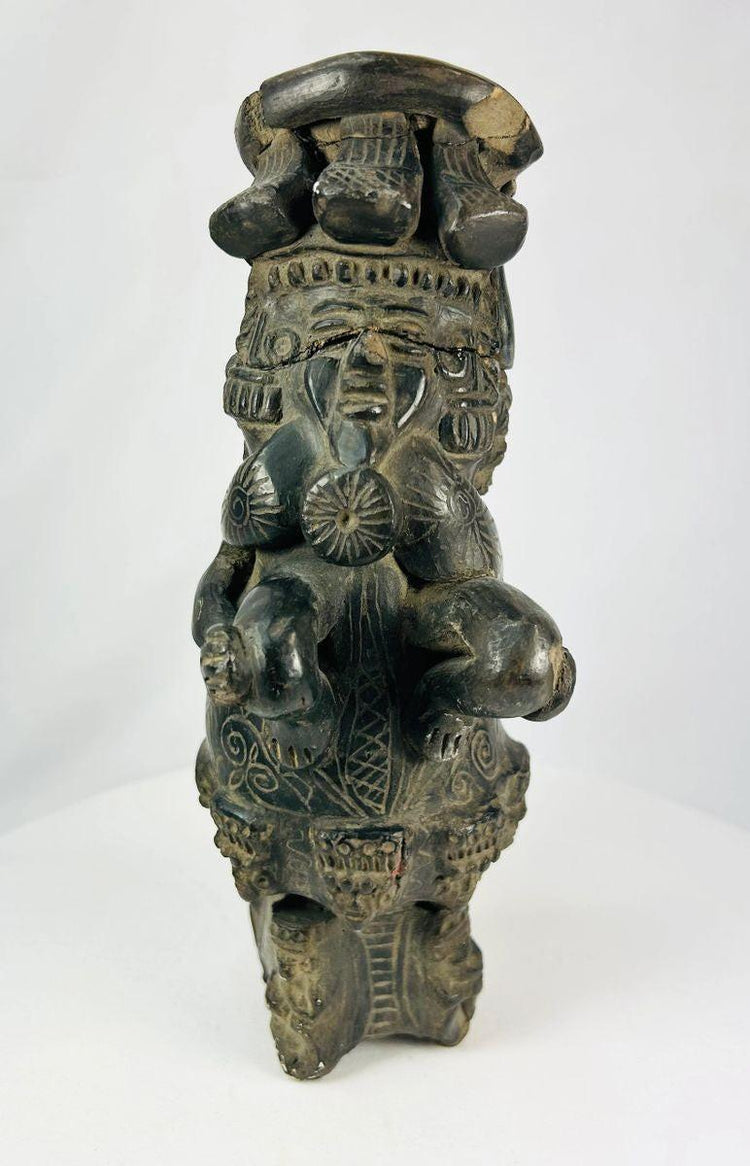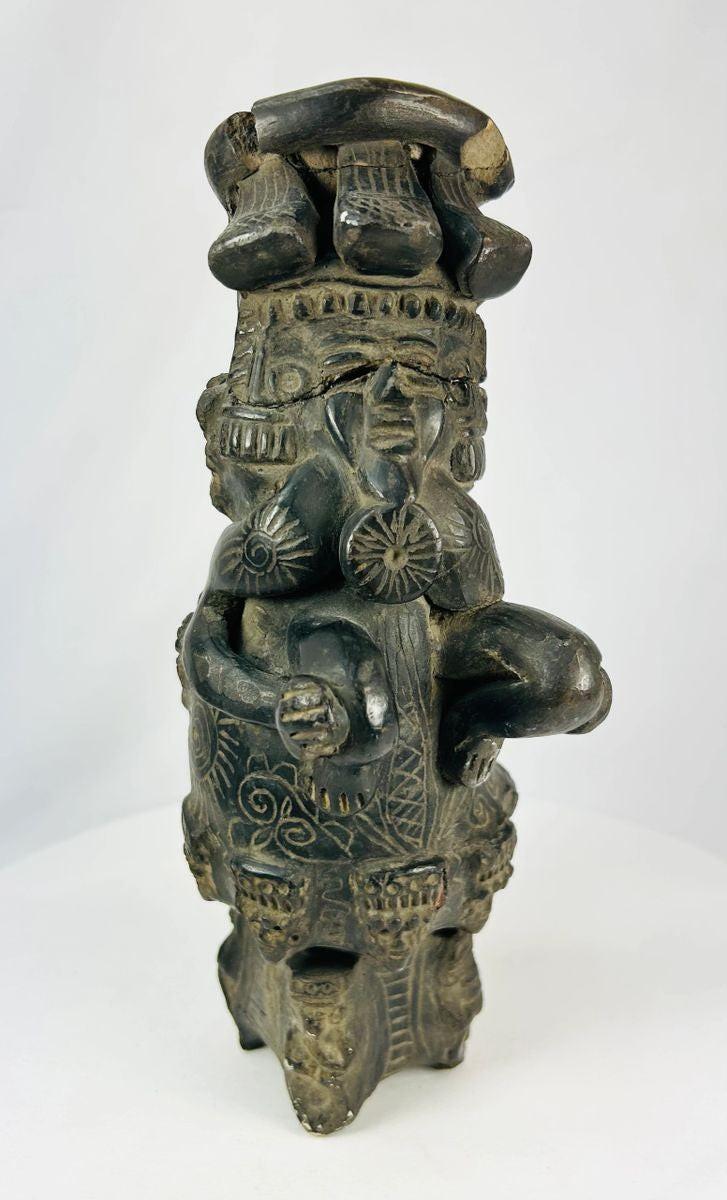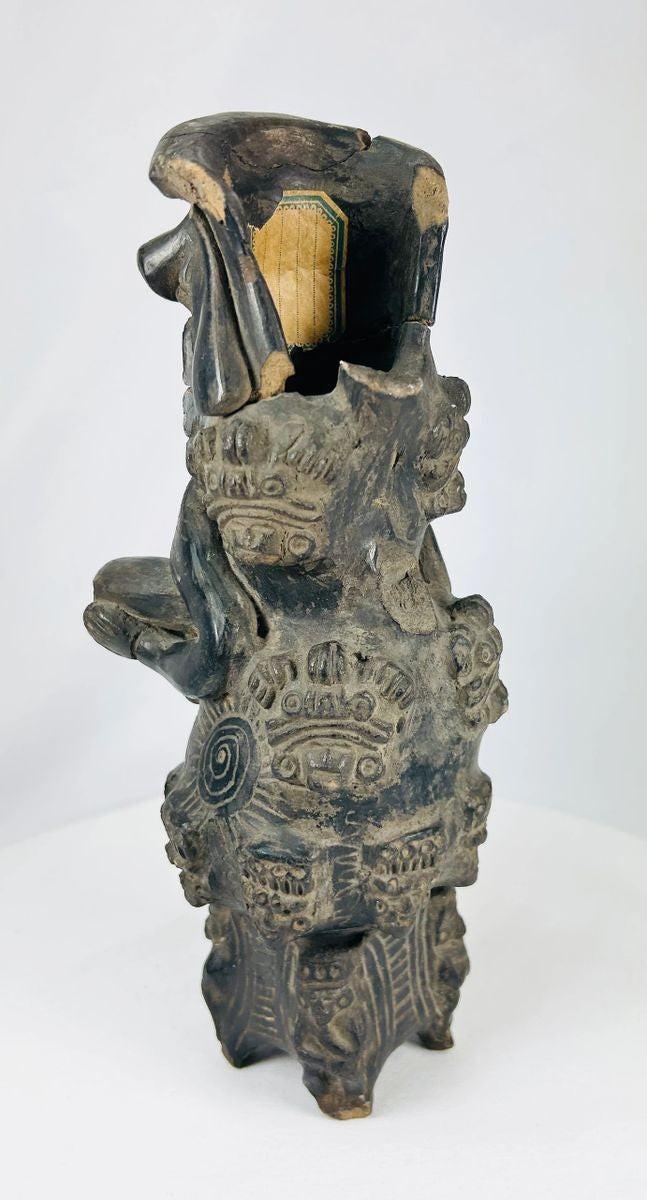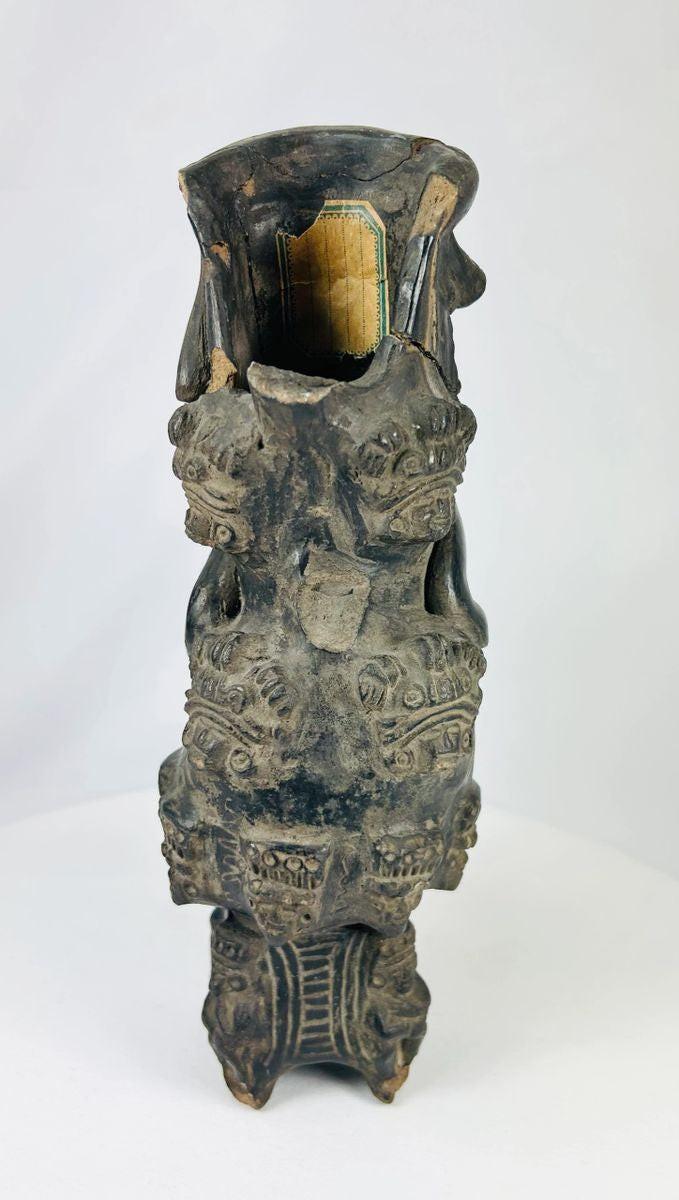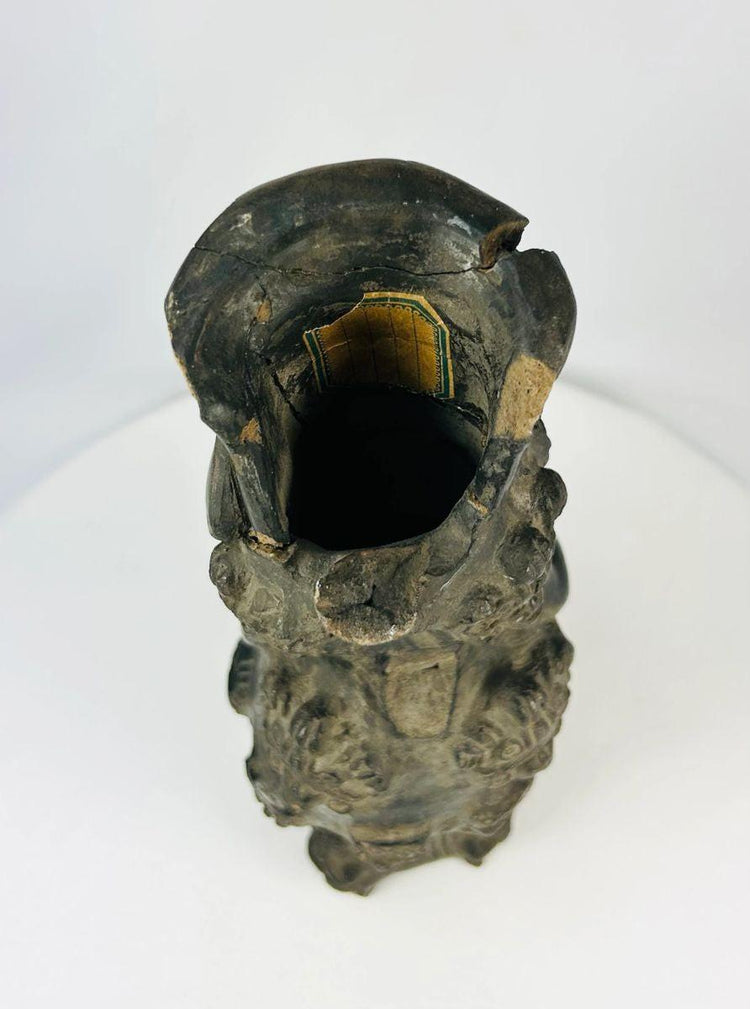Pre-Columbian Revival Sculpture | West Mexican Shaft Tomb Style Terracotta Figure | Mid-20th Century
Description
More
Less
Historical Context & Origin
Region: West Mexico (Colima/Nayarit style)
Material: Burnished terracotta
Period: Mid-20th Century reproduction (in the style of 300 BCE–300 CE)
Description
This compelling seated female figure is modeled in the tradition of ancient West Mexican shaft tomb cultures. The hollow, hand-formed body is rendered in a ceremonial posture, with arms open and knees bent, and incised with spiral and geometric motifs representing textiles or body art. A smaller anthropomorphic form rests atop the headdress, while additional small faces encircle the base. The surface has been burnished to a dark finish, with slip or soot-based treatment imitating ancient burial patina. Though created in the mid-20th century, the figure successfully captures the aesthetic strength and symbolic character of Pre-Columbian funerary sculpture.
Features
- Seated female figure with open arms and bent knees
- Decorative incised spiral and geometric patterns
- Anthropomorphic headdress element and small faces at the base
- Hollow construction with aged burnished surface
- Evidence of older repairs and collector’s label inside
Cultural Significance
Figures of this type were originally placed in shaft tombs as companions or protectors for the deceased, embodying ancestors, fertility deities, or ceremonial participants. While this piece was created during the 20th-century Mesoamerican art revival for collectors or academic study, it remains a faithful homage to the powerful traditions of Colima and Nayarit effigy sculpture.
Condition
Fair overall condition. Visible repairs, including a large rim break and cracks through the midsection. Minor encrustations and wear consistent with age and handling. Despite restorations, the figure retains strong visual impact.
Dimensions (approximate)
Height: 10 in
Age
Mid-20th Century
Description
Historical Context & Origin
Region: West Mexico (Colima/Nayarit style)
Material: Burnished terracotta
Period: Mid-20th Century reproduction (in the style of 300 BCE–300 CE)
Description
This compelling seated female figure is modeled in the tradition of ancient West Mexican shaft tomb cultures. The hollow, hand-formed body is rendered in a ceremonial posture, with arms open and knees bent, and incised with spiral and geometric motifs representing textiles or body art. A smaller anthropomorphic form rests atop the headdress, while additional small faces encircle the base. The surface has been burnished to a dark finish, with slip or soot-based treatment imitating ancient burial patina. Though created in the mid-20th century, the figure successfully captures the aesthetic strength and symbolic character of Pre-Columbian funerary sculpture.
Features
- Seated female figure with open arms and bent knees
- Decorative incised spiral and geometric patterns
- Anthropomorphic headdress element and small faces at the base
- Hollow construction with aged burnished surface
- Evidence of older repairs and collector’s label inside
Cultural Significance
Figures of this type were originally placed in shaft tombs as companions or protectors for the deceased, embodying ancestors, fertility deities, or ceremonial participants. While this piece was created during the 20th-century Mesoamerican art revival for collectors or academic study, it remains a faithful homage to the powerful traditions of Colima and Nayarit effigy sculpture.
Condition
Fair overall condition. Visible repairs, including a large rim break and cracks through the midsection. Minor encrustations and wear consistent with age and handling. Despite restorations, the figure retains strong visual impact.
Dimensions (approximate)
Height: 10 in
Age
Mid-20th Century
You May Also Like




























